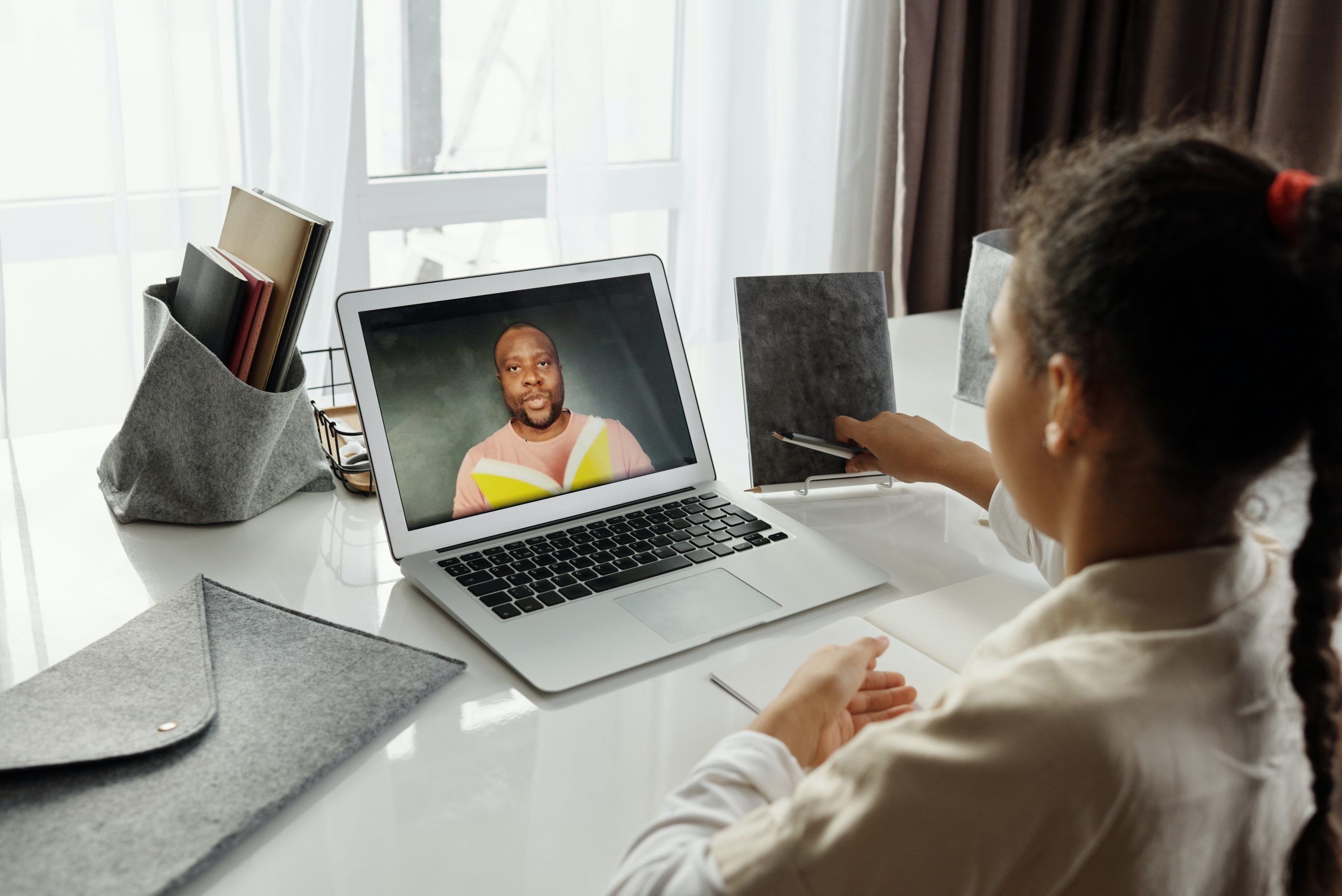
Virtual school, image via Pexels. Credit: August de Richelieu
Going into September, most schools have opened throughout the land: some in-person, some partially in-person, and some fully online. I have been trying to track what I am hearing and seeing through conversations with folks on the ground — and with lots of reading.
Kids (and adults) need and crave human contact. It is baked into our DNA, we are wired to learn socially. Online learning can work in some instances but the current quality of most online learning pales in comparison to the quality of in-person interactions.
So, what am I learning?
Schools can successfully open in-person safely if the level of COVID-19 in the community is very low while there is intensive testing and monitoring for outbreaks.
- Germany, Denmark, and many other countries opened schools earlier this summer with relatively few incidents of outbreaks. Many European schools have instituted rapid testing regimes that allow a community to quickly see outbreaks while redesigning the learning environments by using outdoor learning, tents, and other community spaces to ensure that students and adults will not spread the virus if it arrives.
- Not surprisingly, the experience here in the US is all over the map with some schools opening successfully with few problems and others opening only to have to shut down quickly because of outbreaks. This is as much an indicator of our relatively poor public health system as it is our public schools.
Some American schools have innovated and leaned into student needs with support for in-person programming for some students.
- Littleton and Adams 12 school districts are great examples of what can be done when a district listens to family needs, while other Colorado school boards have arrogantly called out parents for doing what they can for their children.
- Many Colorado early childhood centers have been open over the summer, managing to support student learning, family needs, and keeping the virus at bay. K-12 schools could learn much from ECE centers in terms of how to keep kids together, do their staffing, and keep a clean, safe learning environment.
The good news is that many Colorado communities seem to have substantially reduced the prevalence of the virus making it possible for many schools to go back to in-person learning. The recent data from the Colorado Department of Health seems to be good and moving in the right direction with relatively low levels for the virus spread.
As of September 1, according to the Colorado Department of Health and Human Services, the state’s 7-day positivity rate is 2.66%, with 5.2 new cases per 100,000. When compared with data from other countries, this is a stable positivity rate. Germany has a 2.67% daily positivity rate, Spain has a 3.80% daily positivity rate and the UK has a 5.47% positivity rate, according to John Hopkins’ Coronavirus Resource Center. While the US as a whole is above these countries, at 8.54%, Colorado specifically is making large strides in flattening the curve.
We seem to be in the grey zone in terms of reopening in-person schools, with COVID-19 at very low levels in Colorado. As a state, we’re moving towards the levels of other European countries that have been fairly successful. We have also not seen much evidence that schools are driving community spread of the virus in other countries with higher percentages of the virus but the data is still not great.
The question is: What is the risk of a COVID-19 outbreak with a redesigned school space for social distancing and rate of COVID in my local Denver community, with a current 7-day average of 43 new cases?
The long-term costs for students for students losing a year of learning are enormous, particularly for those students that are already behind in basic literacy and math skills. Unfortunately, the research shows that very few students catch up over time, typically students tend to fall further behind particularly if they do not gain the necessary learning skills and habits in elementary school. The research is clear that instructional time in school makes a difference for both the short and long term.
This is a difficult question that must be answered by each school superintendent in collaboration with local public health officials. It seems many schools should be opening with attention to mask wearing and social distancing. School facilities are generally not designed to be flexible and few schools even in Colorado utilize outside learning which more should be doing regardless of COVID-19. Because every family situation is different, families should have the option of being in-person or online regardless of what the school decides — or creating groups of co-online schooling. All schools must lean much further into how they can compensate for the huge inequities that exist to ensure that families get the support needed for schooling however that can be done as some Colorado schools are doing now.
Policy makers must balance the health and education costs of not having students in school with the risk of contracting COVID. It is a difficult balancing act with such enormous costs either way.
It seems to me that if you have a good testing and monitoring system in place — as some schools and districts do now — it is about balancing all of the risks for student learning, teachers and community health. Given all of these factors, many schools in Colorado should be ready to reopen in-person. We cannot afford to lose one or even two years of student learning.